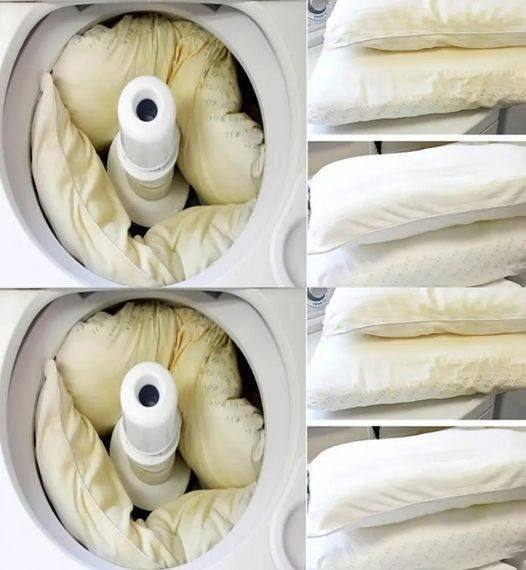In addition to washing, it is equally important to take preventative and beneficial measures to properly care for your pillows to keep them soft, clean and comfortable:
1. Use a pillow protector
They can give your pillow a second line of defense against dead skin cells, sebum, and sweat. All you need to do is get a pillow protector to place under your pillowcase to keep allergens out. Also, remember to wash those covers monthly.
2. Wash your pillows 3 to 4 times a year
This is especially true if you notice them turning yellow.When it comes to pillowcases, which are naturally the first thing that comes into contact with bodily fluids, a good frequency is once or twice a week.
3. Replace your pillows after 2 or 3 years
Although many people keep their pillows for a particularly long time, it is best to replace them after two or three years. In fact, after a while, pillows lose their firmness and are no longer able to support the head properly. However, yellowing is not necessarily a reason to replace them.
How to wash pillows depending on type?
Depending on the filling of your pillows, washing instructions will vary. Here’s what you should do with each type:
Memory foam pillows: Given the risk of damage to the foam filling in a washing machine and the viscoelastic nature of memory foam pillows, hand washing may be a better option. First, completely immerse the pillow in water and squeeze the pillow for 10 minutes. Then rinse until the water runs clear. Wring out thoroughly before air-drying. If there are any stains on the surface, clean them with a damp cloth and a small amount of mild detergent or stain remover. The result: a firm pillow that is ideal for supporting the spine.
Polyester pillows: Wash these types of pillows made of synthetic fibers in lukewarm water on a gentle cycle. The amount of detergent should be small. One or two teaspoons is enough for machine washing.
Feather or goose down pillows: Put these pillows in the washing machine with cold water and mild detergent. Then dry on low heat to avoid damaging the down. The latter can actually deteriorate due to high temperatures.
What about bedding, and how often should you wash it?
The bedroom is a place where there is moisture and warmth, providing ideal conditions for the accumulation of bacteria, microorganisms and other contaminants. To avoid these inconveniences, you should wash your bed linen and duvet cover every two weeks or even every week. There are also natural solutions that will allow you to effectively clean the mattress.
How to wash bed linen properly?
Bedding and sheets should be washed regularly to always enjoy fresh-smelling laundry. That is why it is advisable to wash them at the right temperature, preferably warm. In fact, it is the high temperature that eliminates any pathogens that may have even settled in the microfibers of the sheet. However, you should always check the recommended temperature on the label. This will help avoid deterioration of the quality of the wash.

